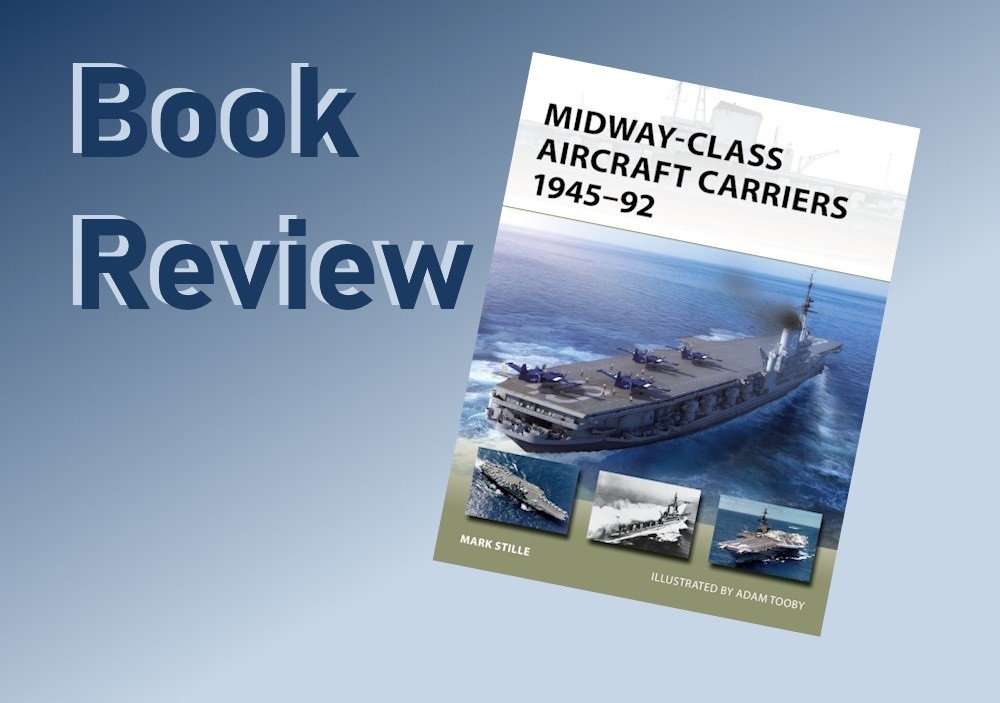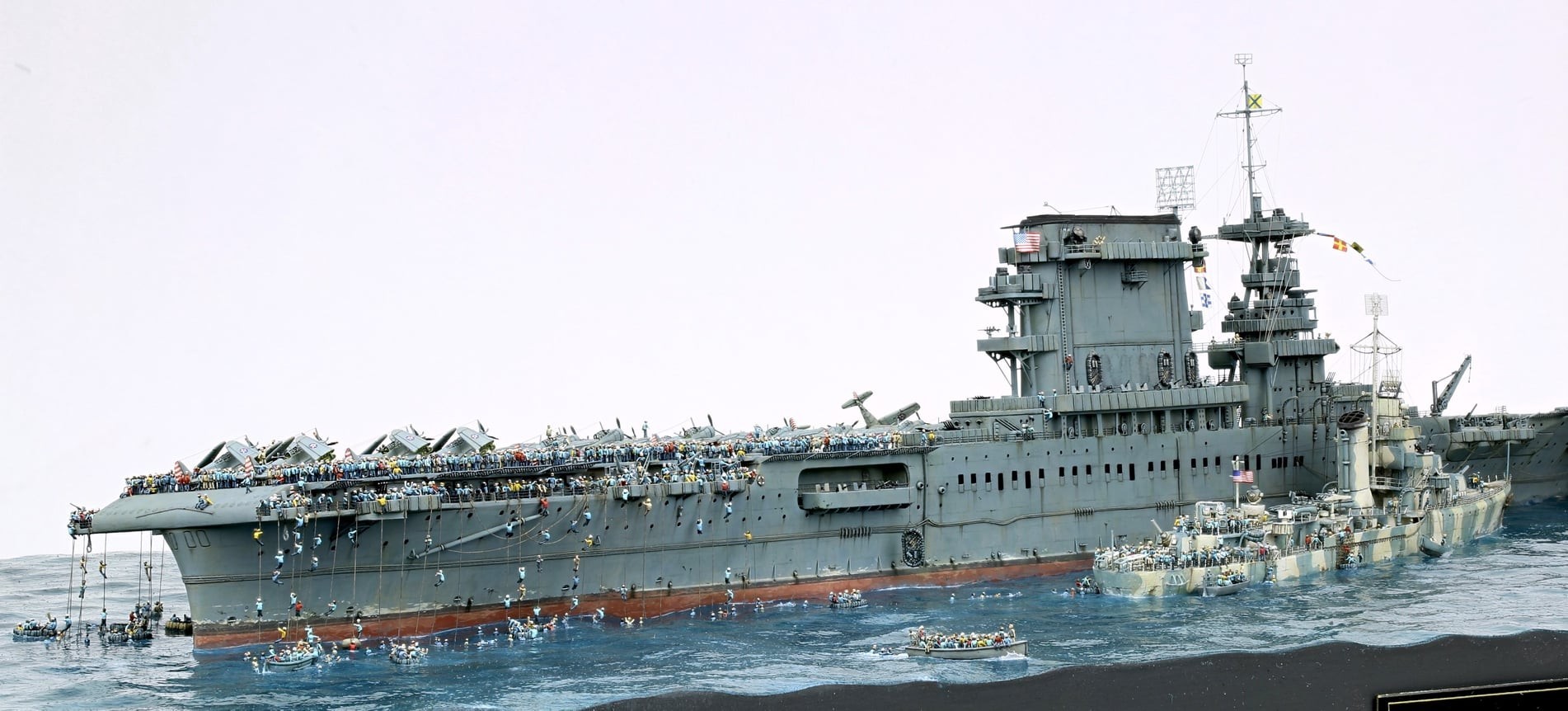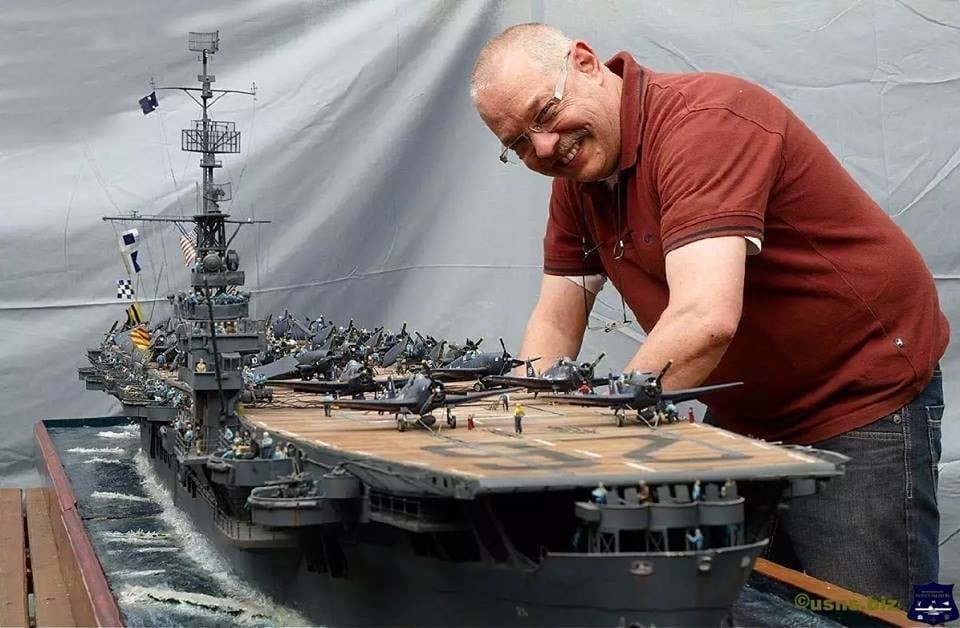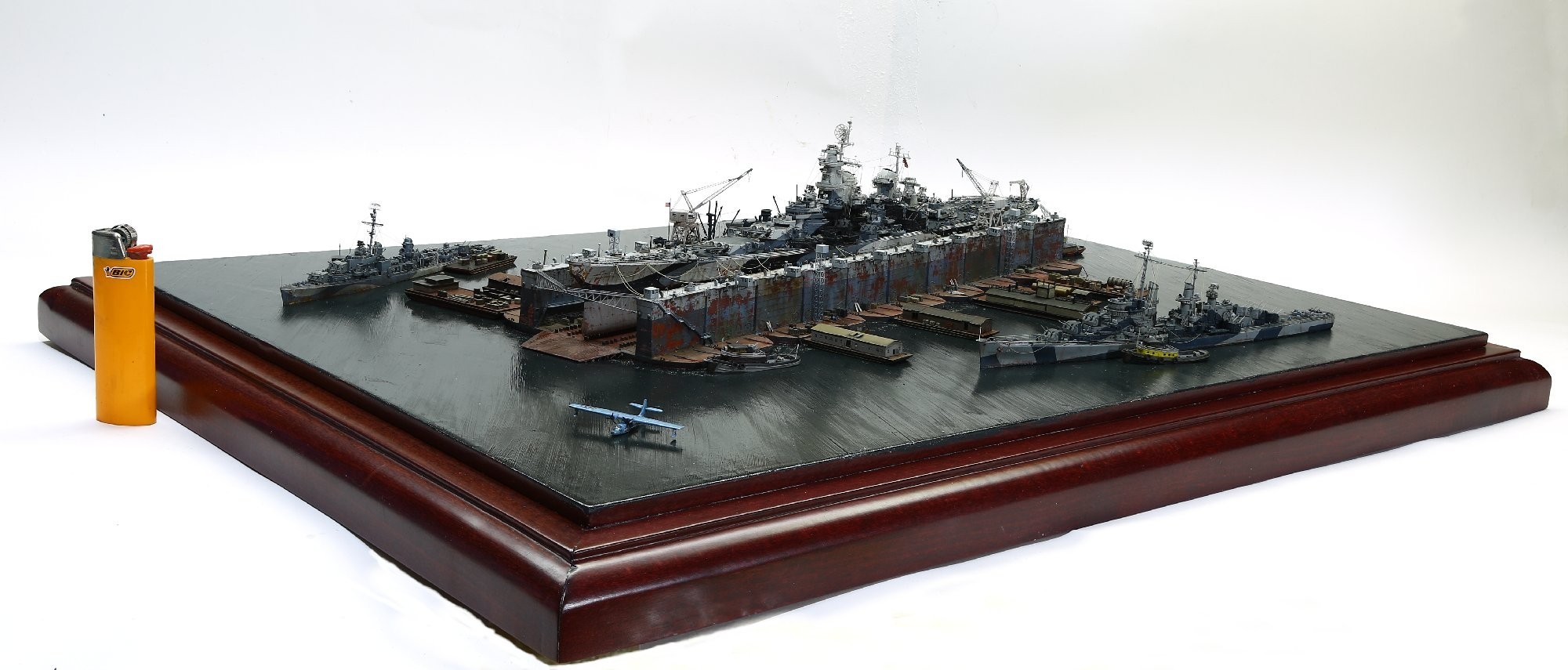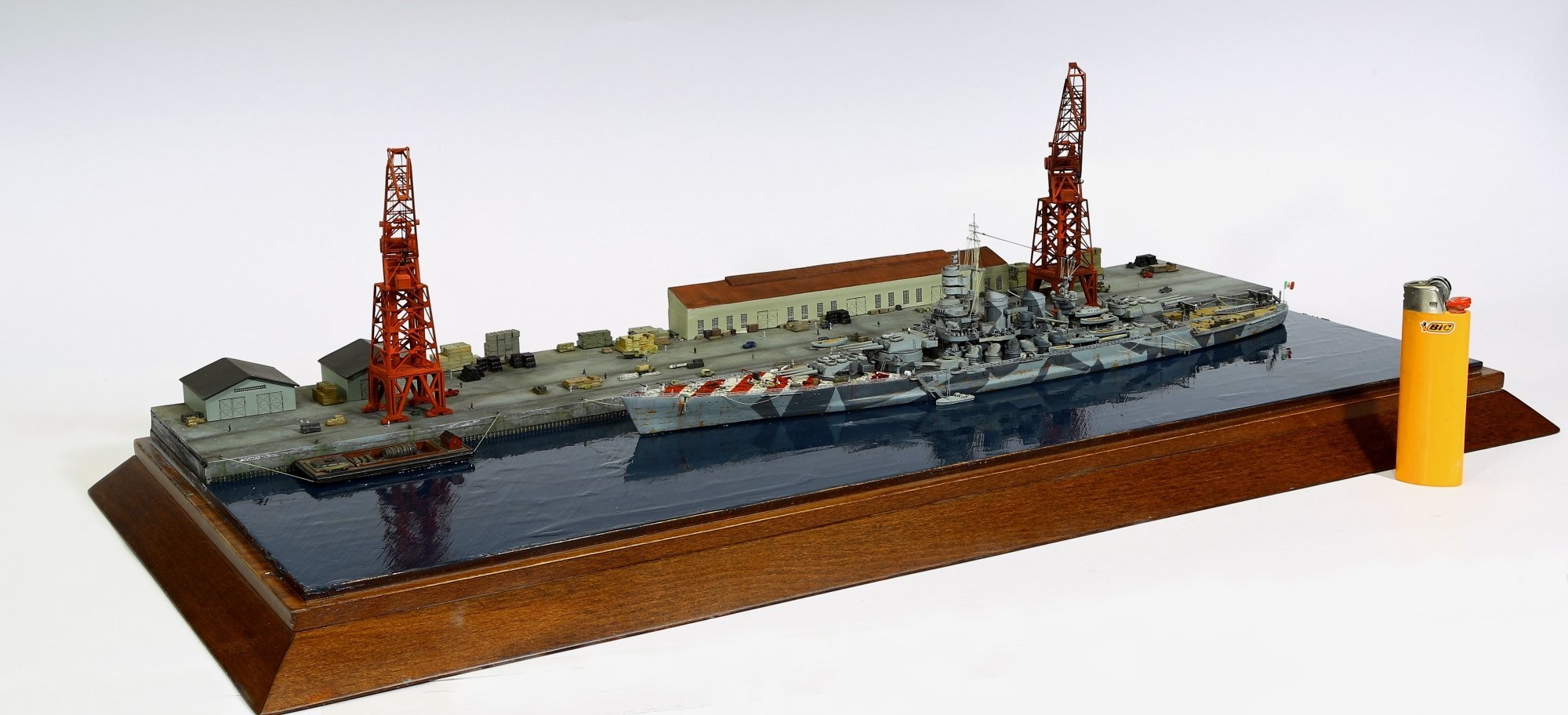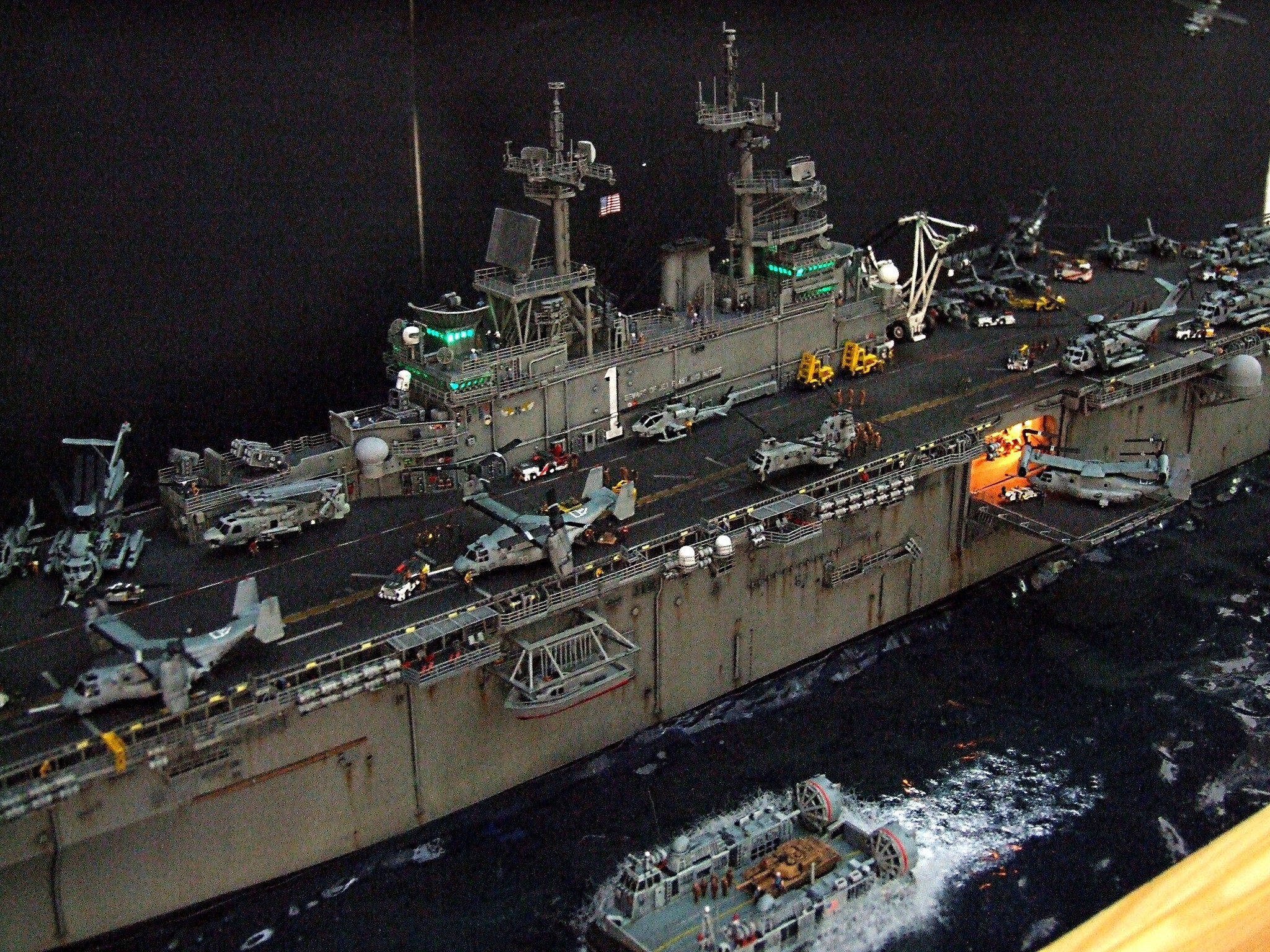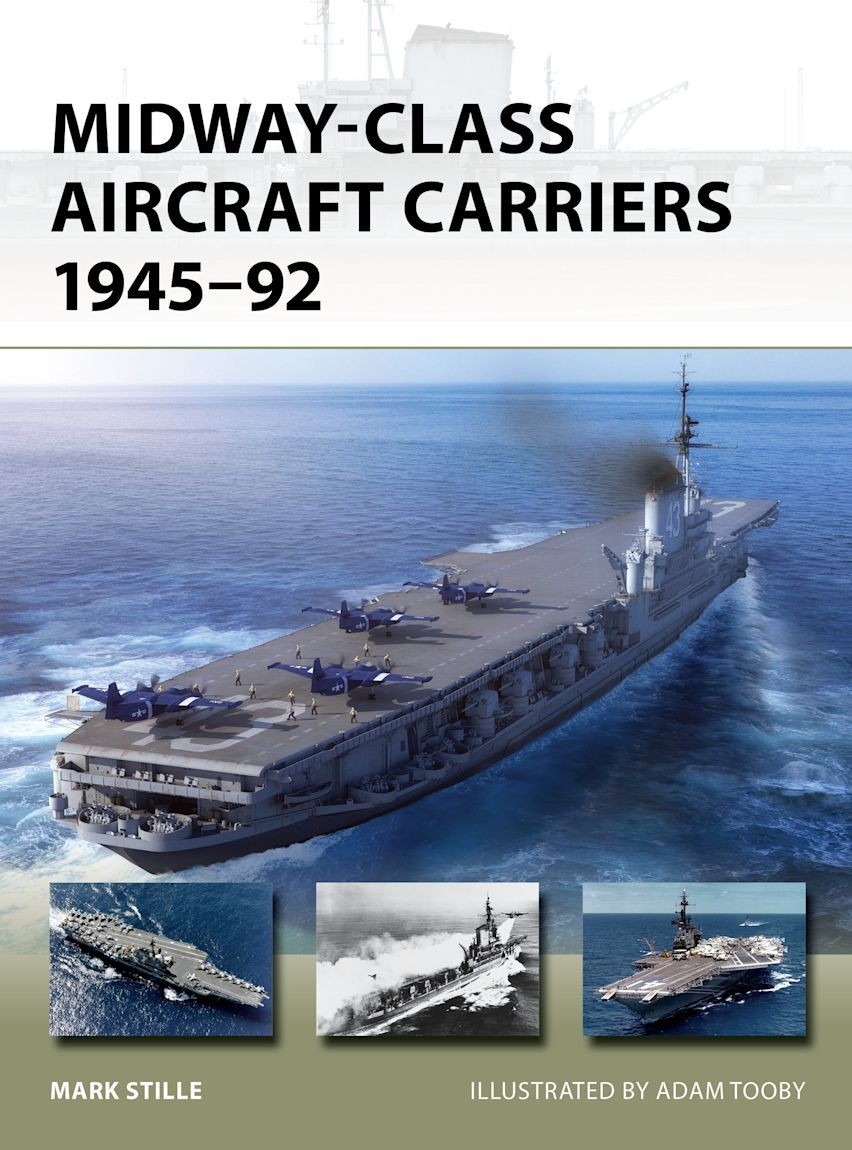
Introduction
Midway-Class Aircraft Carriers 1945–92 is a pending release from Osprey Publishing. Authored by naval historian Mark Stille and illustrated by Adam Tooby, this 48-page addition to the series New Vanguard is catalogued with Osprey's short code NVG 331, and ISBN 9781472860484. It features 40 photos and 8 pages of color illustrations. It is available in paperback, PDF and ePub and Mobi. New evolutions of weapon systems capture the imagination of many modelers and historians. I find this book interesting in the design challenges for the engineers, especially during upgrades and enhancements. Equally interesting is the capability of these ships throughout their careers. Osprey describes this book as;
The history of the US Navy's biggest aircraft carriers to be built during World War II, which found a second life as the backbone of the Cold War fleet.
Entering service in September 1945, the Midway-class aircraft carrier was the US Navy's ultimate World War II-era design, and would be the largest and most capable American carriers as the Cold War dawned. These prestigious, nuclear-capable carriers operated in the Cold War frontlines of the Atlantic and Mediterranean early in their careers, and were big enough to accept significant modernizations over the next decades. Later in their careers, two of the ships saw combat in the Vietnam War. The last ship of the class, Midway, launched the first carrier airstrikes of the Gulf War in 1990–91, and did not finally leave service until 1992.
The Midway class constituted the heart of the US Navy's carrier fleet during the first 15 years of the Cold War until the Forrestal-class supercarriers came into service in the early 1960s. The importance of these ships in conducting presence missions in the European theater early in the Cold War will be highlighted. The basic soundness of the original design will also be highlighted. Two of the ships in the class enjoyed prolonged careers, which will also be traced, and Midway ended its career as a museum ship in San Diego, the only non-Essex-class American carrier to be preserved.
Midways started in World War II and lasted through Desert Storm, with many upgrades and modifications. Thus modelers and historians have many choices for these ships, and will find this an amazing and inspirational subject.
Contents
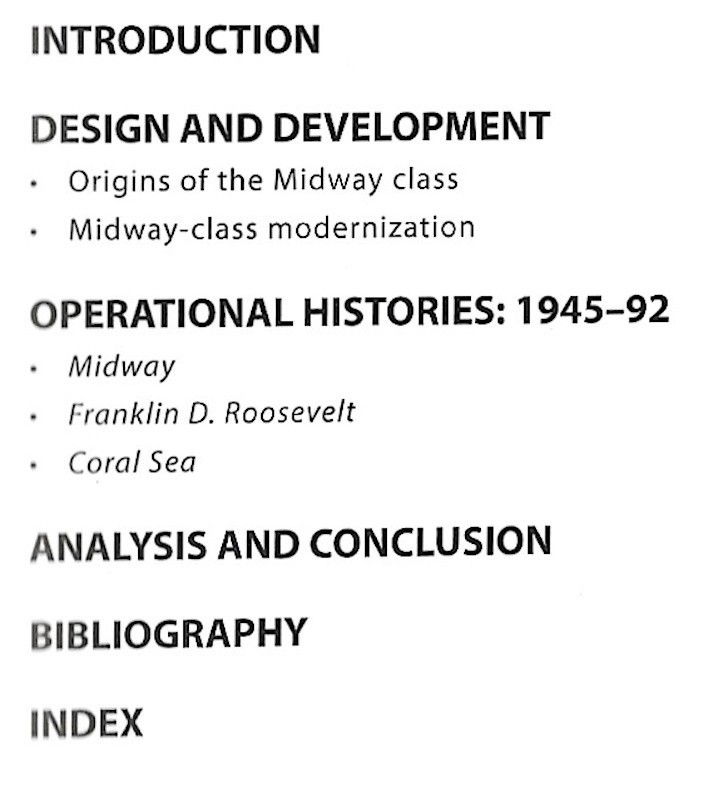
That list of contents from my book is slightly different than the contents shown on Osprey’s webpage. (Not unusual.) Midway-class carriers were designed as WWII supercarriers. There were only three, Midway, Franklin D. Roosevelt, and Coral Sea, and this book examines their histories. A bit of trivia concerns how the ships first entered the water. The text is concise and is supported by black-and-white or color photographs, color art, illustrations, and a cutaway. The text is well arranged and written. I found one typo which lists the Sea Sparrow surface-to-air missile as an air-to-air missile, understandable because the Sea Sparrow was a ship borne adaption of the AIM-7 Sparrow air-to-air missile. The Sparrow was a lousy air-to-air missile and the author mentioned his experience with Sea Sparrow performance.
The text includes facts such as the ship builders and other contractors involved in designing and constructing the ships. Launch dates and other key events are noted. Data tables and illustrations accompany the text. Midways are compared to the Essex-class aircraft carriers (CV) and their design and construction during the war is discussed, as well as new designations for the big Midway-class - CVA - and their further re-designated nomenclature.
The author presents technical details about the ships and their gear:
- Displacement
- Dimensions
- Machinery
- Performance
- Crew
Because of their updating, tables like the above present the information for the ships as completed, and after modifications. That is useful because none of the three ships of the class were identically fitted and equipped.
An example of details you will find in the text include:
- Deck armor thicknesses and effects on seaworthiness
- Machinery
- Protection (hull armor)
- Aircraft facilities
- Designs to minimize effects of shrapnel and blast
- Isolation of engines from boilers
- Weapons
- Radars.
In Modernization we learn of Ship Characteristics Board (SCB) numbers and details, e.g., Fiscal Year of implementation, cost, changes and modifications (changes in aircraft, tonnage, hull modifications); successes and failures, i.e., Naval Sea Systems Command botched their calculations, creating sea keeping problems.
I find that text interesting and useful as a modeler and historian.
Photographs, Artwork, Graphics
Modelers, historians and artists will find a useful gallery of photographs of these CVs reinforcing the text. I did not count them but I guess about a 50/50 mix of color and black-and-white photos. Even images of their aircraft are useful for modelers.* You may have seen these images before but most are new to me and quite interesting. You will see images of the CVAs as completed in 1945, how they looked with additions and deletions of weapons and equipment, hull modifications, etc. Some particularly interesting photos include:
- Soviet DDG close alongside Franklin D. Roosevelt in 1967
- *Unique ID bands on A-7s for Operation Eagle Claw (these A-7s are approximately 1/110 scale if compared to the space they take up on the page and are remarkable for the complete lack of visible panel lines despite the paint being glossy, despite nicotine-colored weathering on the wing tops)
- Forests of masts and antennas
Callouts include:
- Coral Sea's 1985-86 air wing
- USN carrier designations (CV, CVA, CVB) with dates of change
- SCB coordination of design and construction
- USS Midway air groups (3 pages)
Tables
1. Midway-class construction: built at; keel laid; floated; commissioned
2. Midway-class specifications (as completed): Displacement; Dimensions; Machinery; Performance; Crew; Aircraft Facilities; Weapons; Radars
3. Midway-class weapons:
- System (5-in., 3-in., 40mm, Phalanx, BPDMS)
- Shell size
- Rate-of-fire
- Maximum range
4. Principle Cold War Midway-class radars: 11 by type; purpose; max, range
5. Principle Midway-class modernization - three programs per:
- Ship
- Tonnage
- Length
- Beam
- Flight deck size
- Angled deck length
- Elevators/capacity
- Catapults
- Weapons
- Compliment
- Speed
6.-8. Milestones for each of Midway, Franklin D. Roosevelt, and Coral Sea:
- Service dates
- Conversions
- Classifications
- Fate
9-11. Final specifications for each of the three ships':
- Displacement
- Dimensions
- Machinery
- Performance
- Crew
- Aircraft Facilities
- Weapons
- Radars
Original artwork by artist Adam Tooby fills in views and scenes that the camera missed. Each illustration is narrated with explanations and data. The artwork includes profiles and planforms of a Midways from WW2 throught the end of the Cold War. Each shows evolving configurations and equipment/systems. Two action illustrations show a Midway operating the big North American Savage carrier-borne nuclear strike bomber, and a dramatic imminent first F/A-18 Hornet combat launch.
The visual aspect of this book effectively supports the text.
Data table and informational callout examples
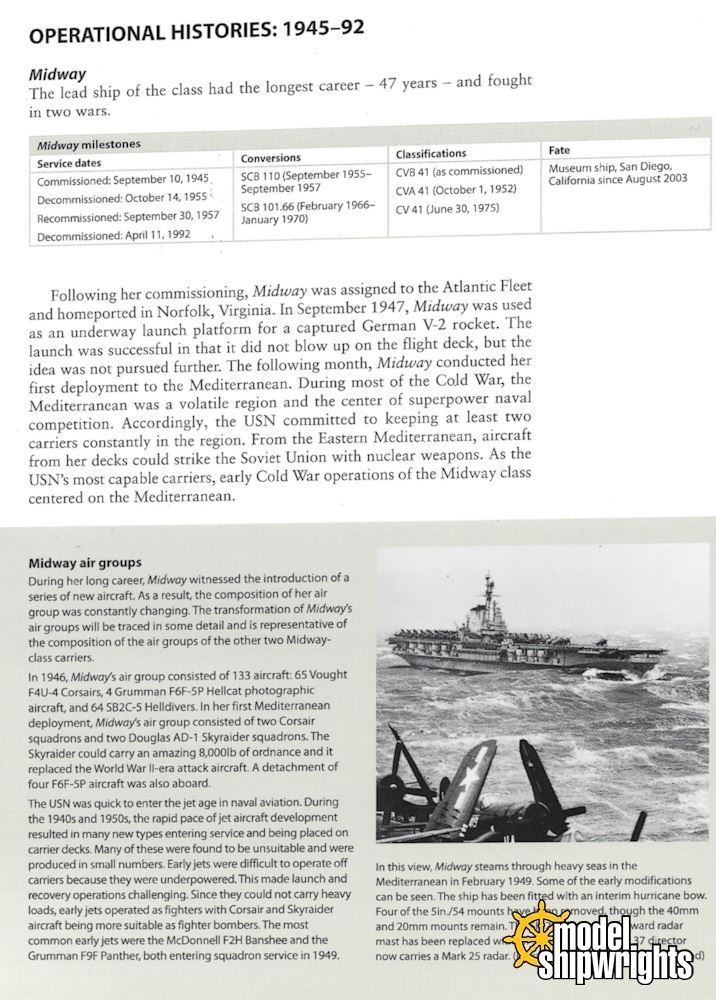
Cutaway spanning two pages
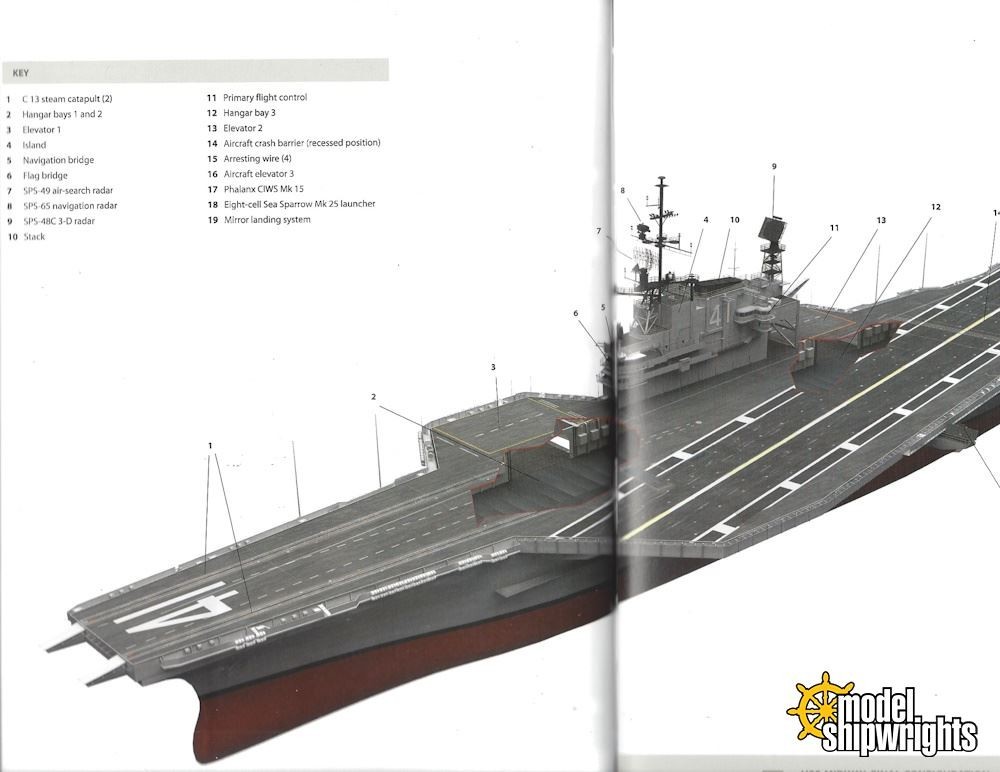
1940s Midways
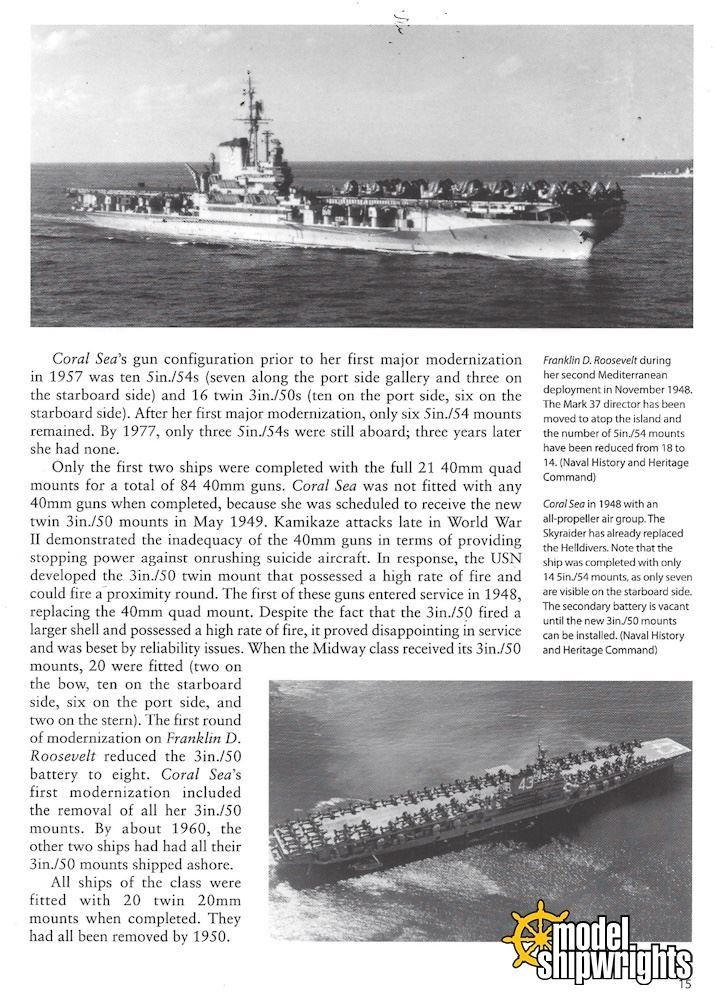
Projecting sea power - count the types of aircraft
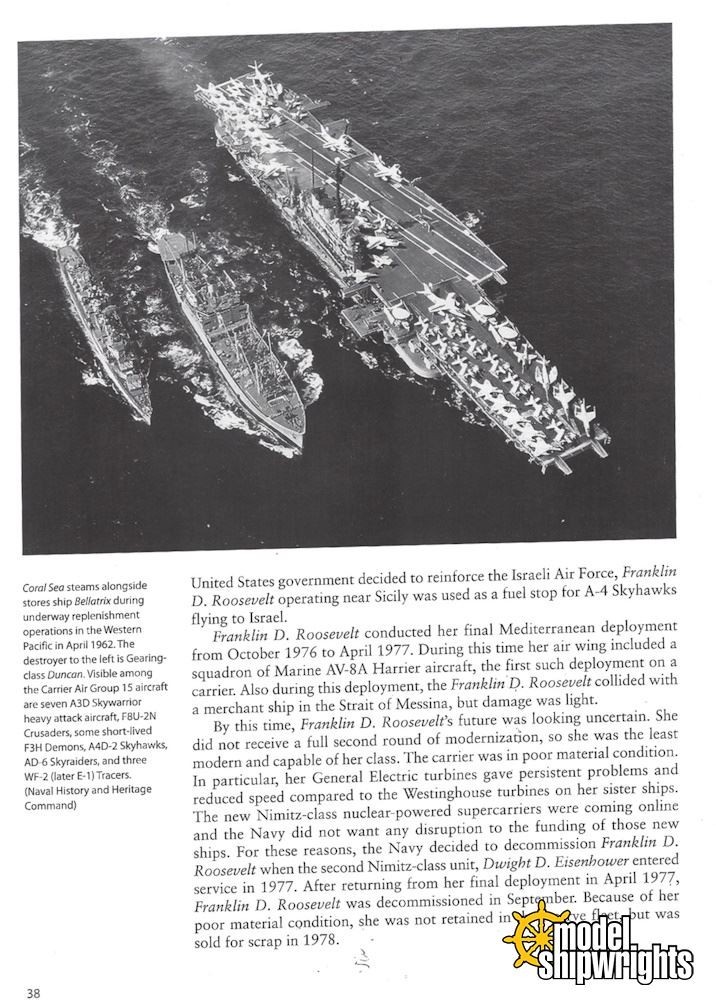
Faded but original color
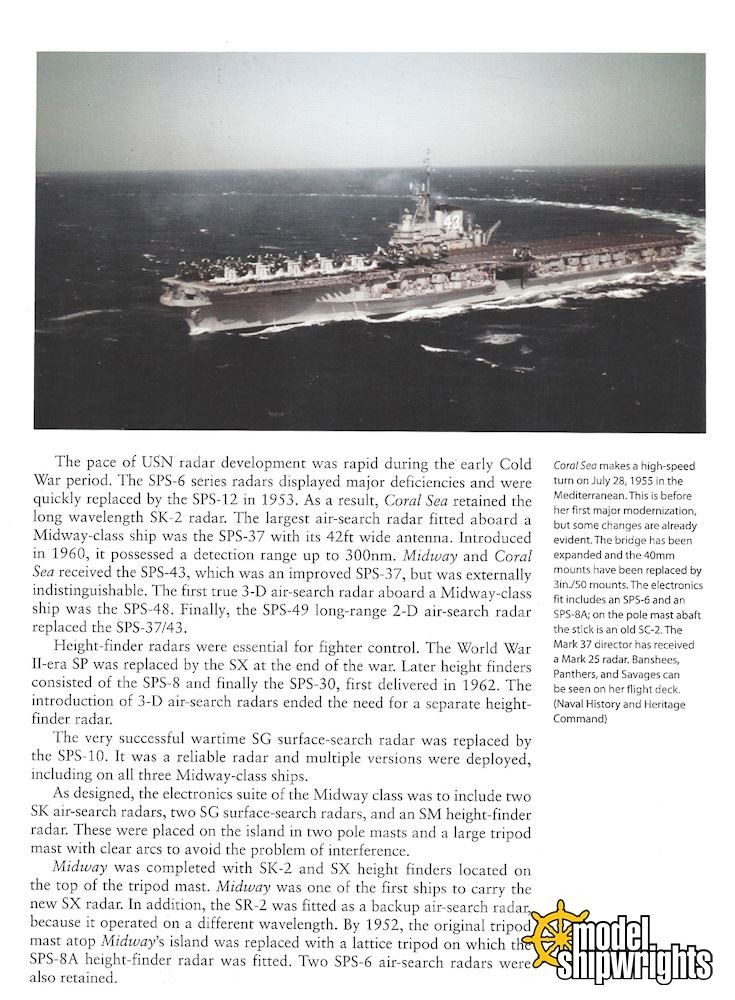
Profile and planform (narrative callout not shown
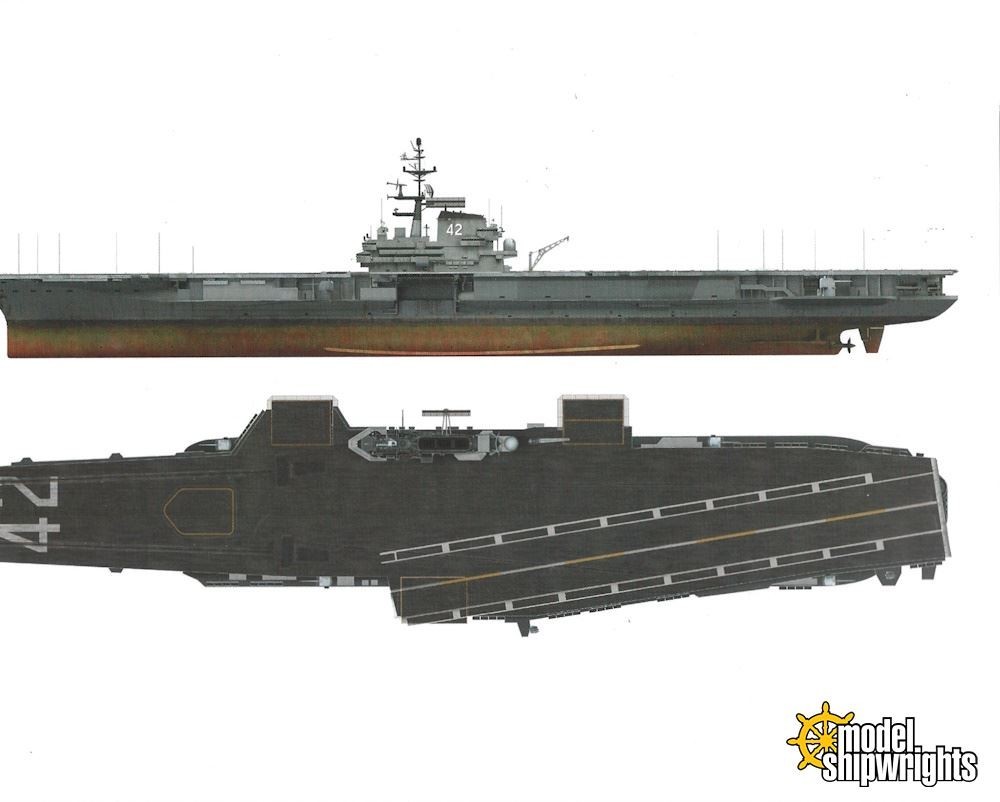
Conclusion
Strengthening my knowledge ofthe Dawn of the supercarrier, Midway-Class is another informative title in Osprey's series New Vanguard. It presents useful scholarly material and plenty of historical and technical details. Modelers, historians and enthusiasts of aircraft carriers, USN supercarriers and Cold War naval power should find this book to be concise, useful and unique. Modelers may find source material and inspiration for their Midway-class subjects. A useful gallery of photographs and artwork provide support to the text.
Relatively small though this book may be, I find it a worthwhile introduction to the Midways, and a good starting place for more in-depth study of desired. It has a home on my reference shelf and its pages will become more dogeared as I build these subjects. Recommended.
Please remember to mention to retailers and Osprey that you saw this book here - on Model Shipwrights.










